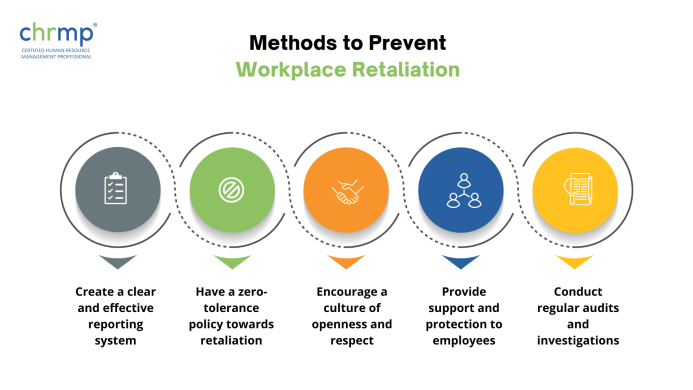
Recruitment Marketing: Your Beginner’s Guide to Attracting Passive Candidates
In today’s competitive job market, finding top talent isn’t just about posting job ads and hoping for the best. The best candidates – the ones who are highly skilled, experienced, and a perfect cultural fit – are often already employed and not actively looking for a new job. These are your passive candidates, and reaching them requires a strategic approach known as Recruitment Marketing.
This comprehensive guide will demystify Recruitment Marketing, explaining how it works and, more importantly, how you can use it to attract and engage those elusive passive candidates, even if you’re just starting out.
What is Recruitment Marketing?
Imagine your company is selling a product. You wouldn’t just put it on a shelf and expect people to buy it, right? You’d market it – tell people about its benefits, show them how it works, and build a positive brand image.
Recruitment Marketing is essentially applying these same marketing principles to your recruitment efforts. It’s about:
- Building your employer brand: How your company is perceived as a place to work.
- Creating compelling content: Stories, videos, articles that showcase your company culture and values.
- Distributing that content: Getting it in front of the right people, even if they aren’t looking for a job.
- Nurturing relationships: Staying in touch with potential candidates over time.
The goal? To make your company so appealing that even those happy, employed professionals consider making a move when the right opportunity arises.
Why Focus on Passive Candidates?
You might be thinking, "Why bother with people who aren’t looking?" Here’s why attracting passive candidates is a game-changer:
- Access to Top Talent: The best people are usually employed. They’re good at what they do, which is why they’re not on job boards.
- Less Competition: Fewer companies are actively trying to recruit passive candidates, giving you a unique advantage.
- Higher Quality Hires: Passive candidates often bring more experience, stability, and a stronger cultural fit because they’re making a deliberate, well-considered move, not a desperate one.
- Proactive vs. Reactive: Instead of waiting for someone to apply, you’re building a pipeline of talent for future needs.
The Foundation: Your Employer Brand and Employee Value Proposition (EVP)
Before you even think about marketing, you need something worth marketing. This is where your Employer Brand and Employee Value Proposition (EVP) come in.
- Employer Brand: This is your company’s reputation as an employer. What do people really think about working for you? Is it a place of growth, innovation, camaraderie, or something else? Your employer brand is built on every interaction, from your website to employee reviews on sites like Glassdoor.
- Employee Value Proposition (EVP): This is the unique set of benefits and rewards employees receive in return for their skills, capabilities, and experience. It’s essentially "what’s in it for them?" Your EVP includes:
- Compensation & Benefits: Salary, health insurance, retirement plans.
- Work-Life Balance: Flexible hours, remote work options, generous PTO.
- Career Development: Training, mentorship, opportunities for advancement.
- Company Culture: Values, team environment, social activities.
- Impact & Purpose: How their work contributes to the company’s mission or society.
How to Build a Strong Employer Brand and EVP:
- Define Your Values: What truly matters to your company?
- Ask Your Employees: Conduct surveys or interviews. What do they love about working here? What could be improved?
- Identify Your Unique Selling Points: What makes your company different and better than competitors as an employer?
- Be Authentic: Don’t just list buzzwords. Showcase real stories and experiences.
Content is King (and Queen!): Creating Engaging Recruitment Marketing Content
Once you know what makes your company a great place to work, it’s time to tell that story. Remember, passive candidates aren’t looking for a job description; they’re looking for a great opportunity and a great place to work.
Here are types of content that resonate with passive candidates:
-
Your Career Page (Your Digital Home Base):
- This isn’t just a list of job openings. It’s a rich, dynamic hub that tells your company’s story.
- What to include:
- Videos: Office tours, employee testimonials, a "day in the life" of different roles.
- Employee Spotlights: Short bios and stories about your team members.
- Company Culture & Values: Explain what it’s like to work there and what your company stands for.
- Benefits & Perks: Go beyond the basics – highlight unique offerings.
- Career Growth Paths: Show how employees can develop and advance.
- Diversity, Equity, & Inclusion (DEI) Initiatives: Showcase your commitment.
- Awards & Recognition: If you’re a "best place to work," flaunt it!
- SEO Tip: Optimize your career page with keywords people might search for, like "software engineer jobs [your city]," "marketing careers at [your company type]."
-
Blog Posts & Articles:
- Industry Insights: Share your company’s expertise and thought leadership. This shows you’re innovative and a leader in your field.
- Employee Stories: Feature success stories, career transitions, or personal journeys within the company.
- "Day in the Life" Series: Give a realistic glimpse into different roles.
- Company News & Updates: Celebrate milestones, new product launches, or community involvement.
-
Video Content (The Most Engaging Format):
- "Why Work Here" Videos: A compelling overview of your company culture and mission.
- Team Introductions: Short, fun videos of team members introducing themselves and their roles.
- Q&A with Leaders: Humanize your leadership team.
- Event Highlights: Show your company culture in action at team-building events or conferences.
- Testimonials: Nothing beats genuine employee voices.
-
Employee Testimonials & Case Studies:
- These are incredibly powerful because they’re authentic. Ask employees to share their experiences in their own words, either written or on video.
- Focus on specific challenges they’ve overcome, growth opportunities they’ve had, or what they love most about the company.
-
Social Media Posts (Beyond Just Job Ads):
- Share your blog content, videos, and employee stories.
- Post photos and short clips of team events, office life, and company celebrations.
- Engage with comments and questions. Show off your company personality!
Distribution & Engagement: Getting Your Content Seen
Creating great content is only half the battle. You need to get it in front of passive candidates.
-
Leverage Social Media (Strategically):
- LinkedIn: The go-to for professional networking.
- Share thought leadership articles from your leaders.
- Post company culture updates.
- Encourage employees to share company content.
- Use LinkedIn Groups relevant to your target talent.
- Consider LinkedIn Recruiter Lite or Talent Solutions for targeted outreach.
- Facebook: Great for showcasing company culture, community involvement, and more casual interactions.
- Run targeted ads to specific demographics.
- Create engaging video content.
- Instagram: Highly visual. Perfect for showing off office aesthetics, team events, employee spotlights, and "day in the life" stories via Reels and Stories.
- TikTok: If your target demographic is younger, use short, fun, authentic videos to show off your company’s personality.
- Glassdoor/Indeed/Comparably: Monitor reviews and actively respond to them. Encourage employees to leave reviews. This is crucial for your employer brand.
- LinkedIn: The go-to for professional networking.
-
Search Engine Optimization (SEO) for Recruitment:
- Just like you optimize your products for Google, optimize your career content!
- Keyword Research: What terms do your ideal candidates search for? (e.g., "best tech companies to work for," "digital marketing jobs," "company culture [your industry]").
- On-Page SEO: Use these keywords naturally in your career page copy, blog posts, video descriptions, and job titles.
- Technical SEO: Ensure your career site is mobile-friendly, loads quickly, and is easy for search engines to crawl.
-
Email Marketing & Talent Nurturing:
- Build a "talent pool" or "talent community" of interested individuals (even if they’re not applying yet).
- Offer them a chance to subscribe to your career newsletter.
- Send out regular emails with:
- New blog posts and videos.
- Company news and achievements.
- Invitations to virtual events or webinars.
- Insights into your industry.
- This keeps your company top-of-mind and builds a relationship over time.
-
Employee Advocacy Programs:
- Your employees are your best brand ambassadors. Encourage them to share company content, job openings, and their positive experiences on their personal networks.
- Provide them with easy-to-share content and guidelines.
- Consider incentives for sharing or for successful referrals.
-
Referral Programs:
- Passive candidates are often found through personal connections. A strong employee referral program is gold.
- Offer competitive bonuses for successful hires.
- Make the referral process easy for employees.
The Candidate Experience (Even for Passive Candidates)
Even if a passive candidate isn’t applying now, their interactions with your company matter. A positive experience can turn a curious browser into a future applicant.
- Easy-to-Find Information: Is your career site clear and intuitive?
- Prompt Responses: If someone reaches out with a question, respond quickly and professionally.
- Respectful Interactions: Treat everyone who engages with your brand with respect, regardless of whether they’re a fit for a current opening.
- Personalized Outreach: If you do reach out directly, make it clear you’ve done your homework and explain why you think they’d be a good fit. Avoid generic, mass messages.
Measuring Success: How Do You Know It’s Working?
Recruitment Marketing is a long-term strategy, but you need to track its effectiveness.
Key Metrics to Monitor:
- Website Traffic to Career Pages: Are more people visiting?
- Social Media Engagement: Likes, shares, comments on your recruitment content.
- Talent Pool Growth: How many people are joining your talent community?
- Source of Hire: Where are your best hires coming from? (Ideally, you’ll see more from social, referrals, and your talent pool.)
- Time to Hire: Is it decreasing for certain roles?
- Quality of Hire: Are the candidates you’re attracting through these efforts performing better and staying longer?
- Candidate Sentiment: What are people saying about your employer brand online?
Tools to Help:
- Google Analytics: To track website traffic and user behavior.
- Social Media Analytics: Built-in tools on platforms like LinkedIn, Facebook, and Instagram.
- Applicant Tracking Systems (ATS): Many have reporting features for source of hire.
- Candidate Relationship Management (CRM) tools: Specifically designed for nurturing talent pools.
Conclusion: Invest in Your Future Talent Pipeline
Recruitment Marketing, especially for attracting passive candidates, isn’t a quick fix; it’s a continuous investment in your company’s future. By consistently building your employer brand, creating compelling content, and strategically distributing it, you’ll transform your recruitment efforts from reactive to proactive.
Start small, focus on authenticity, and remember that every piece of content and every interaction contributes to your reputation as an employer. Over time, you’ll build a strong talent pipeline, making it easier and more efficient to find and hire the exceptional individuals who will drive your company forward. Good luck!



Post Comment